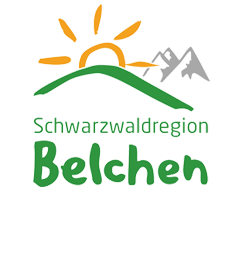10. Run-of-river power (Water current creates electric current)
Salmon in the river Wiese?
In the past, salmon were able to reach the upper stretches of the river Wiese here at Schönau (Regiowasser 2016). Until the middle of the 19th century, the salmon was still a common fish up to Schopfheim. (WFBE 2019). But when dams were built to use hydropower, they created insurmountable obstacles for migratory fish.
After the construction of the large hydropower plants on the upper Rhine between Iffezheim (near Strasbourg) and Basel salmon could not reach the river Wiese all together.
An environmental catastrophe brings on the turning point
On November 1, 1986 a warehouse of Sandoz-AG near Basel caught on fire. Large quantities of firefighting water contaminated with pesticides ended up in the Rhine and killed fish for hundreds of kilometres of the river. Citizens from Switzerland all the way to The Netherlands were horrified.
In response to the disaster, a ministerial conference in December decided to restore the Rhine to a healthy state. The lost but formerly naturally abundant species such as salmon should be able to return to the area (ICPR 1987).
Three problems had to be tackled to achieve this goal: stopping the discharge of salts and toxic wastewater into the Rhine, making the barrages passable for fish, and reestablishing near-natural habitats in the Rhine and its tributaries, where the fish can spawn. The fish ladder here at Buchenbrändle is an example of this.
The programs “Salmon 2000” and “Salmon 2020” have already borne fruit. Several barrages are now equipped with fish ladders, and since the end of 2018 the flood gates in Holland provide better access from the sea to the Rhine again. But the last hurdles in Rhinau, Markolsheim and Vogelgruen have yet to be removed. Once this is done in a few years' time, salmon, sea trout and other migratory fish from the river Wiese may return to the southern Black Forest to spawn after their time in the sea.
Although renewable energies such as hydropower are largely climate-neutral, they still involve interferences with nature. The example of the Rhine and its tributaries shows that solutions are available. Today, the river and its tributaries are in significantly better condition than in the 1970s, despite CO2-neutral energy production.
Literature and Links:
- DNR Pressemitteilung (15.11.2018): Niederlande machen Tor zum Rhein frei für Lachse. Online: https://www.dnr.de/presse/pressemitteilungen/pm-2018/niederlande-machen-tor-zum-rhein-frei-fuer-lachse/
- IKSR - Internationale Kommission zum Schutz des Rheins (o.J.): Der Lachs kommt voran! Online: https://www.iksr.org/de/themen/oekologie/pflanzen-und-tiere/fische/der-lachs-kommt-voran/
- IKSR (1987): Aktionsprogramm Rhein. Online: https://www.iksr.org/fileadmin/user_upload/Dokumente_de/Kommuniques/APR_d.pdf
- IKSR (2018): Masterplan Wanderfische Rhein 2018. Online: https://www.iksr.org/fileadmin/user_upload/DKDM/Dokumente/Fachberichte/DE/rp_De_0247.pdf
- Merki, M. (2012): Zögerliches Comeback - NZZ.ch, 26.06.2012: Online: https://www.iksr.org/fileadmin/user_upload/Dokumente_de/2012-06-27_-_nzz_-_Z%C3%B6gerliches_Comeback.pdf
- Nückles, B. (2019): Fischtreppen oder Rheinschlingen: Wie kann der Lachs zurückkehren? Badische Zeitung vom 08.07.2019. Online: https://www.badische-zeitung.de/fischtreppen-oder-rheinschlingen-wie-kann-der-lachs-zurueckkehren--175048990.html
- Regiowasser (2016): Lebenszyklus des Lachses. Online: http://regiowasser.ak-wasser.de/node/62
- Schneider, (2009): Fischökologische Gesamtanalyse einschließlich Bewertung der Wirksamkeit der laufenden und vorgesehenen Maßnahmen im Rheingebiet mit Blick auf die Wiedereinführung von Wanderfischen. (165 S.) Online: https://www.iksr.org/fileadmin/user_upload/DKDM/Dokumente/Fachberichte/DE/rp_De_0167.pdf
- WFBE (aktualisiert 2019): Wiese. Online: https://www.wfbw.de/unsere-arbeit/programmgewaesser/wiese/
- https://www.lfvbw.de/images/beitraege/Projekte/Symposium_Lachs.pdf
The panel for download as pdf (563.5 KB)




